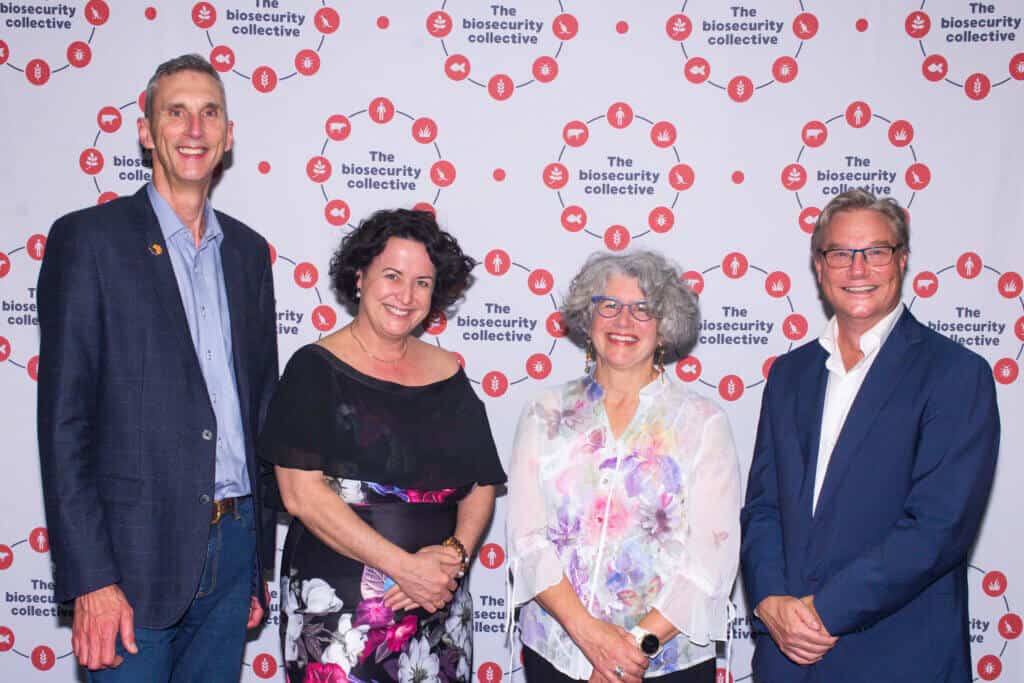This week, Treasurer Jim Chalmers will gather the nation’s economic leaders to debate bold ideas for lifting productivity. But unless that agenda squarely confronts the escalating costs of environmental decline, including due to invasive species, it will miss one of the most urgent productivity reforms of our time – and Australian businesses, taxpayers and our wildlife will pay the price.
Former Treasury Secretary Ken Henry recently spelled it out: “The biggest threat to future productivity growth comes from nature itself – more particularly, from its destruction.” He’s right. But the true economic danger isn’t just environmental decline; it’s the chronic underinvestment in stopping the threats driving it. Every year we delay, the bill grows bigger and the damage becomes harder to reverse.
Early intervention is a no-brainer when it comes to biosecurity and invasive species action. Catch a new threat early and eradication costs a few million. Miss the window and it spirals into the billions. Failure means these costs are borne by taxpayers forever. Fixing this is textbook productivity reform.
Yet while we have one of the best agriculture biosecurity systems in the world, when it comes to environmental biosecurity responses, governments keep building half a bridge: short-term, thinly spread funding that fails to finish the job. There’s no long-term funding model, no workforce strategy to plug growing capacity gaps, and no mechanism to make risk-creators pay their share. The burden falls on volunteers, landholders and local councils – while agriculture, tourism, regional communities and national security suffer.
We’ve already seen what happens when our world’s governments ignore the economic risks of nature. The single biggest shock to productivity in the past decade wasn’t a tax or wage change – it was COVID-19, a biological invasion (yes, an invasive species) that cost the global economy tens of trillions of dollars. And it won’t be the last.
Here at home, invasive species have cost Australia at least $650 billion over the last 10 years, including due to COVID-19. And that’s a conservative number, because it includes only documented costs, which amount to about $25 billion a year for management costs and mainly agricultural damage. It doesn’t take into consideration the destruction of our landscapes, nor the priceless loss of unique species found nowhere else on Earth.
Even so, it’s almost 1% of our GDP. To put that in perspective, insurers now pay out an average of $4.5 billion each year for extreme weather claims.
Despite this, governments continue to allocate a paltry fraction of our resources to environmental biosecurity each year – even as ecological timebombs continue to tick across the country.
Take fire ants, for example. These pests will cost Australia up to $22 billion by the 2040s if eradication fails. That’s $2 billion each year in medical bills, ruined farmland, lost tourism, cancelled sports seasons, and damaged infrastructure – costs borne by farmers, local councils, and communities. This isn’t a hypothetical disaster; it’s a very real threat that’s already unfolding.
We’ve seen it before. Rabbits once drained more than $2 billion every year from Australia’s pastoral sector. But we turned that around by investing in biocontrols – myxoma and calicivirus – saving the economy an estimated $70 billion (up to 2011). However, as these biocontrols lose effectiveness, rabbits are again causing $200 million in annual losses to agriculture and unquantified environmental degradation. With no funding for new biocontrols, we’re letting one of Australia’s biggest biosecurity victories slip through our fingers.
Myrtle rust is already degrading our forests, threatening 16 species with extinction and set to strip up to $340 million a year from our carbon sequestration efforts once fully established.
These are not isolated incidents. A failure to properly invest in prevention is a productivity blind spot.
If Treasurer Chalmers is serious about productivity, environmental biosecurity must be treated as core economic infrastructure. That means long-term funding, investment in prevention and early detection and a workforce plan to deliver biosecurity at scale. Markets won’t fill the gap – relying on a theoretical biodiversity market only delays action and encourages some to shirk their responsibilities.
A productivity agenda built on piecemeal environmental biosecurity is a bridge to nowhere.
Jack Gough, CEO, Invasive Species Council








